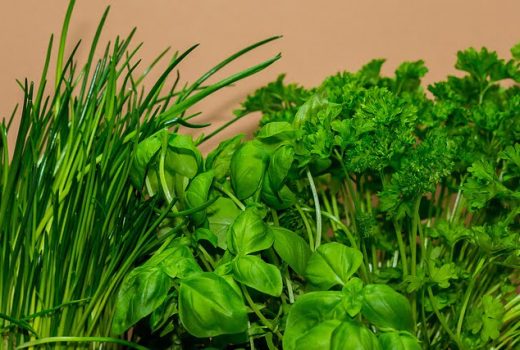Growing herbs indoors is a great idea for people who don’t have the space to grow them outdoors. Whether you have a small balcony, a porch, or simply a windowsill with a little bit of light, you don’t need to miss out on the joy of growing and harvesting your own fresh herbs. With a little bit of knowledge and care, you can grow your own herbs and save money.
Benefits of Growing Herbs Indoors
Growing your own herbs indoors is a simple and cost-effective way to enjoy fresh herbs year-round. Most herbs can be grown indoors, providing they have sufficient light and given the care and attention they need to flourish.
There are many benefits to growing herbs indoors, including:
- Freshness
- Convenience
- Control over pests and diseases
- Less time spent on gardening
- Allows you access to delicious flavors to liven up your favorite dishes whenever you need
- Easy to grow in pots and can be moved around the home as needed
What You Need To Get Started
To get started, you need a pot that has good drainage. Indoor potted plants don’t need to be watered as frequently as outdoor potted herbs given they are more protected from the sun, wind, and water evaporation. Your herb pot needs to have a drainage hole so your herbs don’t get water-logged and essentially, drown. You can simply place a saucer underneath the pot to catch any water run-off.
Furthermore, you will need a good-quality potting mix, soil, fertilizer, a watering vessel, and a sunny location. The most important thing is that you have a sunny spot in your home that gets at least six hours of sun exposure per day. This will provide enough natural light for the plants to grow well and produce plenty of herbs for you to enjoy!
- Find a pot or container that is large enough for your herb plants to grow in.
- Fill the pot with soil that has good drainage and does not have too much clay in it.
- Place the herb plant in the pot and water it well with water that has been treated with a diluted liquid seaweed solution.
- Place the pot where it will get about 6 hours of sunlight per day.
Top 7 Easiest Herbs To Grow In Your Indoor Herb Garden
Here are 7 of the easiest and most popular herbs to grow indoors:
Chives
Chives are a great herb to grow indoors and they taste great in eggs, salads, soups, sandwiches, etc. It’s a versatile herb for those who want an extra flavor boost without having to go out and buy one from the store every time you need it. Make sure your chive plants are not getting too much sun or they will get too leggy.
Thyme
Thyme grows well indoors and in containers and has the added benefit of being able to repel insects such as ants and flies from your kitchen or home, so it’s especially useful for those who have pets or children. Thyme does need plenty of light. You should also fertilize it with compost every few weeks and prune it regularly to encourage new growth.
Oregano
Oregano can be grown indoors as well. It requires moderate light, good drainage, and plenty of space to grow. You can harvest the oregano plant when it reaches 6 inches or more in height or after its flowers bloom for the first time. Not only does oregano have a great flavor but it also has many health benefits from helping with indigestion to boosting your immune system!
Parsley
Parsley is another herb that is easy to grow indoors as long as there is enough light and a well-drained potting mix. It can be used in a variety of dishes such as salads, soups, stews, and mixed with scrambled eggs. It’s one of the most widely used herbs and is always handy to have on hand.
Rosemary
Rosemary is a popular herb that people use to flavor and garnish their dishes. It is also used as a medicinal herb to help with digestion, headaches, and memory loss. Growing rosemary inside is possible, but it takes a little more work than growing it outside. Rosemary needs at least 6 hours of sunlight a day to thrive. If you don’t have enough natural light, you can use grow lights. You can also give your plants a boost by fertilizing them with compost tea or liquid seaweed every few weeks.
Sage
Sage should be planted in a pot with good drainage. Sage does not need much water, so it is important to make sure the soil is moist but not wet. In order for sage to grow, it needs around 7 hours of sunlight, so it should be placed near a window or outside on the patio during the day.
Mint
Mint plants are ideal for indoor gardening. They don’t require a lot of light and can be grown in a pot or in the garden. You can grow Mint inside all year round, even in winter when not much else is growing. It’s a refreshing herb to have on hand. Simply steep some fresh mint leaves in hot water for 5-8 minutes for a delightful cup of hot mint tea.
The best thing about growing herbs indoors is that it doesn’t take years of experience or much space to get started. You don’t need any fancy gardening tools, just some pots, potting mix, water, light, and patience. It’s a low-cost hobby that over time, even saves you money while paying dividends with an abundance of fresh herbs to enjoy. This is one of the easiest ways to start gardening even if you have minimal space and effort available.

